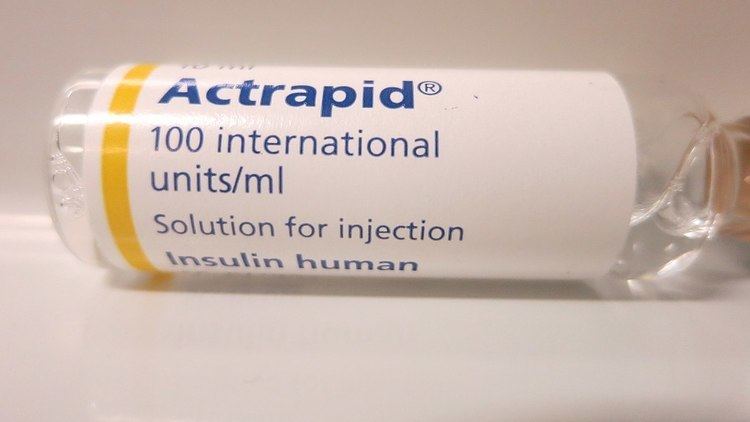AHFS/Drugs.com Monograph ATC code A10AB (WHO) | MedlinePlus a682611 | |
 | ||
Trade names Humulin R, Novolin R, Actrapid, others Pregnancycategory US: B (No risk in non-human studies) Routes ofadministration subcutaneous, intramuscular, intravenous | ||
How to mix insulin nph and regular insulin nursing mixing insulin clear to cloudy
Regular insulin, also known as neutral insulin and soluble insulin is a type of short acting insulin. It is used to treat diabetes mellitus type 1, diabetes mellitus type 2, gestational diabetes, and complications of diabetes such as diabetic ketoacidosis and hyperosmolar hyperglycemic states. It is also used along with glucose to treat high blood potassium levels. Typically it is given by injection under the skin, but may also be used by injection into a vein or muscle. Onset of effect is typically in 30 minutes and they last for 8 hours.
Contents
- How to mix insulin nph and regular insulin nursing mixing insulin clear to cloudy
- Dumb way to remember insulin lispro regular insulin nph glargine lantus
- Medical uses
- Side effects
- Manufacture
- Formulations
- References
The common side effect is low blood sugar. Other side effects may include pain or skin changes at the sites of injection, low blood potassium, and allergic reactions. Use during pregnancy is relatively safe for the baby. Regular insulin can be made from the pancreas of pigs or cows. Human versions can be made either by modifying pig versions or recombinant technology.
Insulin was first used as a medication in Canada by Charles Best and Frederick Banting in 1922. It is on the World Health Organization's List of Essential Medicines, the most effective and safe medicines needed in a health system. The wholesale cost in the developing world is about 2.39 to 10.61 USD per 1,000 iu of regular insulin. In the United Kingdom 1,000 iu costs the NHS 7.48 pounds, while in the United States this amount is about 134.00 USD. Versions are also available mixed with longer–acting versions of insulin, such as NPH insulin.
Dumb way to remember insulin lispro regular insulin nph glargine lantus
Medical uses
It is used for the long term management of diabetes. Regular insulin is the treatment of choice for the two diabetic emergencies diabetic ketoacidosis and hyperosmolar hyperglycemic states. It may also be used in combination with glucose to lower potassium levels in those with hyperkalemia.
Side effects
Side effects may include: low blood sugar levels, skin reactions at the site of injection and low potassium levels among others.
Manufacture
Humulin one brand name for a group of biosynthetic human insulin products, developed by Arthur Riggs, working with Genentech in 1978 (Generic names regular insulin, insulin isophane and the Lente series consisting of Lente (known generically as insulin zinc suspension) is actually a mixture of Ultralente and Semilente) and later acquired by Eli Lilly and Company, the company who arguably facilitated the product's approval with the U.S. Food and Drug Administration. The Lente series was discontinued by Lilly in 2005. Prior to the development of synthesized human insulin, patients were dependent on animal insulin which was more costly, less accessible, and caused infections in some patients.
Humulin is synthesized in a laboratory strain of Escherichia coli bacteria which has been genetically altered with recombinant DNA to produce biosynthetic human insulin. Humulin R consists of zinc-insulin crystals dissolved in a clear fluid. The synthesized insulin is then combined with other compounds or types of insulin which affect its shelf life and absorption. For example, Humulin N is combined with protamine to extend the time-activity profile of Humulin R for an extended period.
Formulations
It is currently sold by many manufacturers in a number of different forms.
By Eli Lilly these include:
